South Dakota is home to many types of flora and fauna. Life in South Dakota spans 77,123 square miles of prairies, farmlands, mountains, and glacial lakes. It is a place you will want to experience, and checking out the tallest mountain in the state is a great way to do it. Black Elk Peak has a remarkably diverse animal population, just like the diversity within the terrain and climate.
Black Elk Peak is located in the Black Elk Wilderness inside of Custer State Park in the town of Custer. The peak sits a staggering 7,242 feet above sea level. This is a high peak, but what’s even better is that it is the highest point east of the Rocky Mountains in Colorado to the Pyrenees Mountains in France.
A Bit of History
Black Elk was born in 1863 in Little Powder River in what is now known as Wyoming. He was the second cousin to Crazy Horse. Black Elk began having visions as a little boy of only five years old. When he was nine, he had a vision that painted his future calling as a holy man. In the dream, he met with the Six Grandfathers, who represent the four cardinal directions along with the Earth and Sky. They each gave him a gift, and the ability to heal another person was one of those such gifts.
When Black Elk was 12, Colonial Lieutenant Custer scoured the land for a military post and, in doing so, violated the Fort Laramie Treaty of 1868. The treaty legally gave the Black Hills land to the Lakota. Soon after Custer broke the treaty, gold was discovered in the mountains, and close to a thousand miners came to stay in the Black Hills. Custer was killed, but the war upon Native Americans had just begun. Over many decades, Black Elk remained a holy man to his tribe and did his best to understand the white man and make peace. This majestic mountain range is named after Black Elk for his peace, bravery, and spiritual significance to the Lakota.
The Black Elk Wilderness and Peak are regarded respectfully as spiritual places. Many creatures call the Ghost Dance-echoing mountains home, and some of the most unique and interesting reside on top of Black Elk Peak. Read on to find out what these animals are and when the best time is to see them.
Animals of Black Elk Peak
Any wilderness is home to tons of wildlife, but on Black Elk Peak, it takes a special kind of animal to handle the weather and terrain. Some animals are relatively common, and others cannot be seen elsewhere. Black Elk Peak in the Black Hills is mesmerizing and awe-inspiring with its views of Montana, North Dakota, South Dakota, Wyoming, and Nebraska. Without further ado, meet the animals of Black Elk Peak.
#1 Black Bear (Ursus americanus)
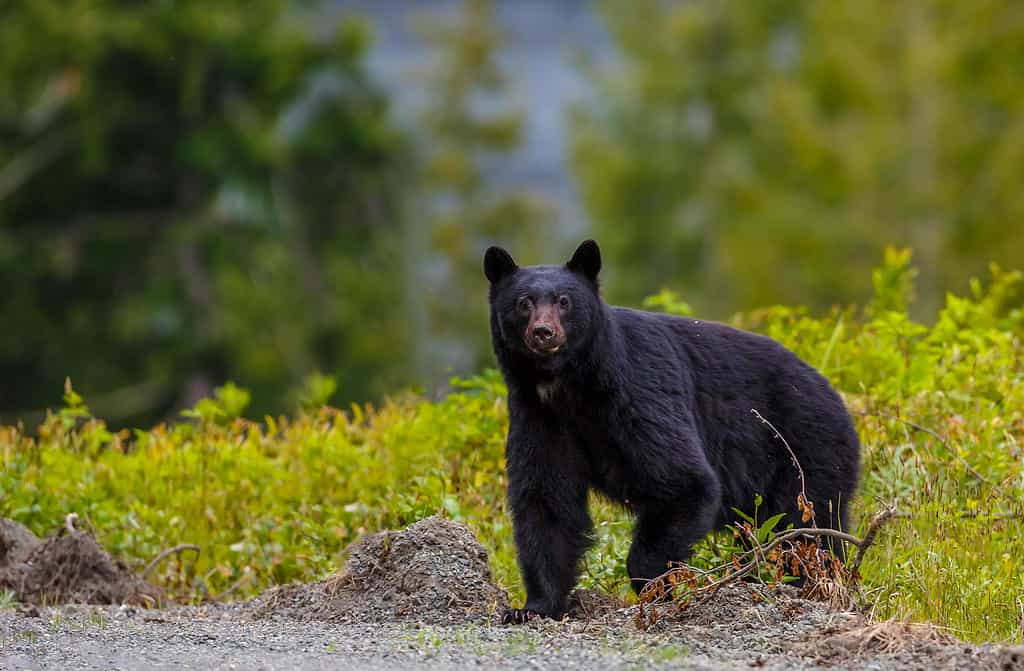
Appearance: Solid black, black eyes and brown muzzle
Size: 90 – 660 pounds and 4.3 – 6.2 feet long
Habitat: Forest
Diet: Berries, fish, insects, roots, carrion
Lifespan: 10 – 30 years
The black bear is one of those mountain creatures that is very seldom seen. Conservation efforts have been underway, resulting in a boom in the black bear population. These medium-sized bears are timid but also curious. If you plan to camp while in South Dakota, follow proper food storage techniques to ensure you still have food when you get hungry. These bears stick to foraging during the daylight hours, so it is always possible to see one while you are on the trail.
#2 Black Hills Mountain Goat (Oreamnos americanus)
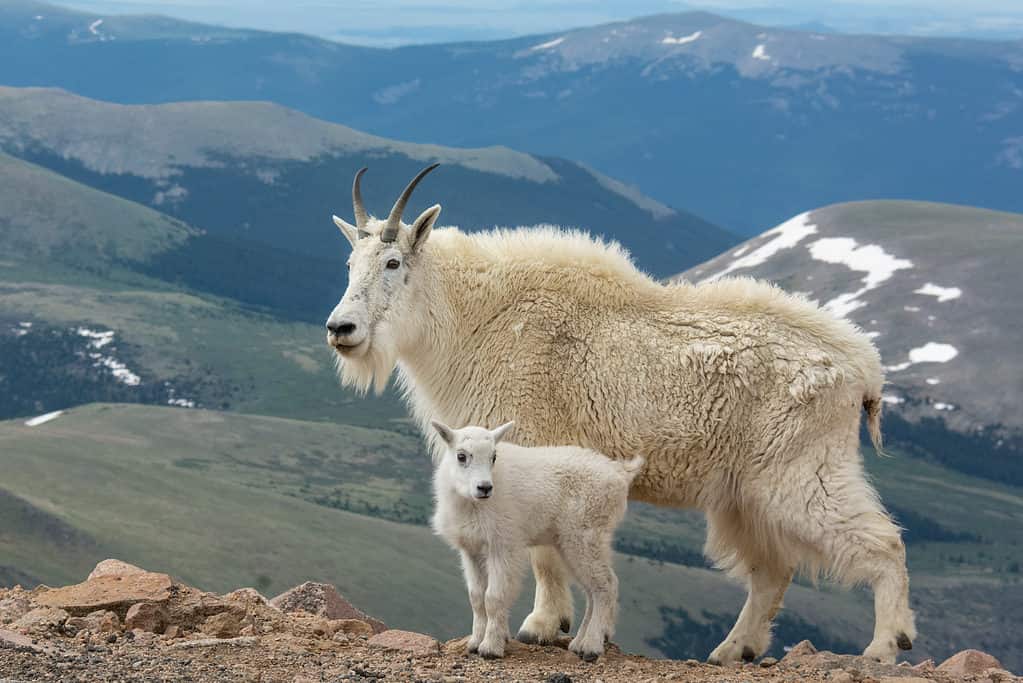
Appearance: Fuzzy white or light beige with two thin horns and a white beard.
Size: 180 – 280 pounds, 4.7 – 5.1 feet long, 2.6 – 3 feet tall at the shoulder, and has horns up to 10 inches long
Habitat: Impossible-looking rock faces on very tall mountains up to 13,000 feet
Diet: Lichens, shrubs, grass, herbs, ferns, and trees
Lifespan: 18 years
These mountain goats might look cute and huggable, but they are not, and approaching one should not be done. They are wild animals and must be treated as such. They are sometimes aggressive and will attack humans even if they are familiar with being around them. These goats scale the sides of almost vertical mountain cliffs and even sleep under small overhangs on the rocky sides of mountains.
#3 American Buffalo/Bison (Bison bison)

Appearance: Massive brown to almost black beasts with cow-like horns and wooly coats. The coat is incredibly thick around the neck and head, creating a bearded look. They have long, thin tails with hair at the end, similar to cows.
Size: 790 – 2200 pounds, 7 – 12.5 feet long, and 5 – 6.5 feet to the hump
Habitat: Open grassy plains and prairies
Diet: Grass
Lifespan: Up to 20 years
American Bison, or Buffalo, as they are most commonly called, have made a comeback in the Black Elk Wilderness. It all began in 1914 when 36 bison arrived at the park, which was then a game preserve. In 30 years, the herd had grown to 2,500 bison, and overgrazing the area became an issue. The Black Elk Buffalo Roundup kicked off in 1965 and has done so in September of each year. Some bison are removed from the herd and sold to bison ranchers across the United States for breeding purposes.
#4 Wild Burros (Equus asinus)
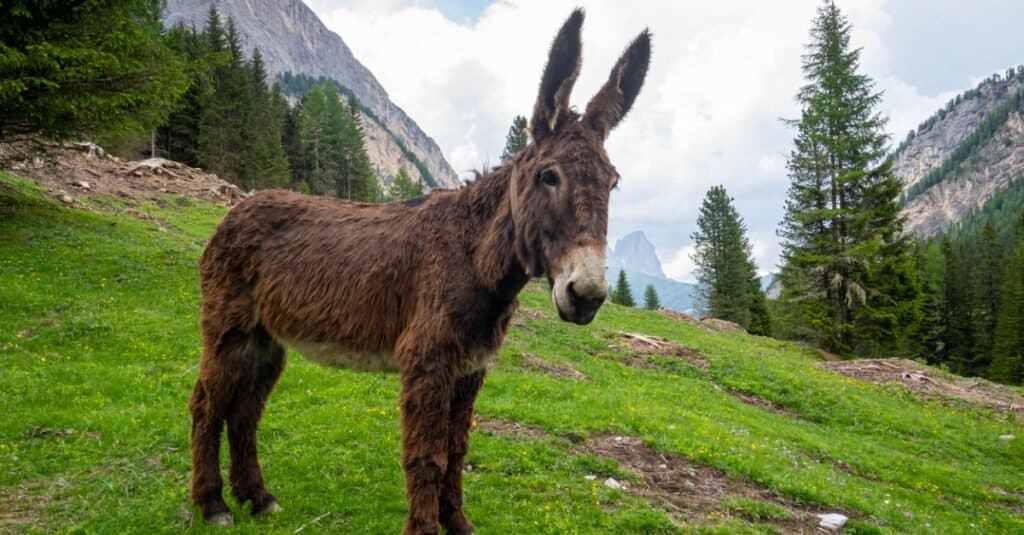
Appearance: Chestnut brown furry coats that are much longer in winter and giveaway to shorter, cooler summer hair. They have enormous, long ears and a white or grey muzzle.
Size: 500 pounds and average 11 hands tall or 2.6 – 5.2 feet at the withers
Habitat: Open plains, grassy areas, and mountain ranges where their expert climbing unfolds
Diet: Native grasses and small woody plants
Lifespan: 27 – 40 years
Burros are undomesticated donkeys. Some may be friendly and reasonably used to human interaction, but it is imperative to remember that these are wild animals and not domesticated. Respect for these animals is essential when they are encountered. Do not approach them but instead admire them from a safe distance. The burros are not native to the South Dakota park but are descendants of those who once brought visitors to the summit. They were released, and their population has increased. They are originally from Africa and were brought over when the Spaniards came in the 1500s.
#5 Mule Deer (Odocoileus hemionus)

Appearance: Similar to white-tailed deer in looks; tan to light brown fur, white face, and muzzle, large mule-like ears, white behind with a narrow white tail with a black tip and forked antlers
Size: 95 – 330 pounds, 31 – 42 inches at the shoulder, and 3.9 – 6.9 feet long
Habitat: Mountains, open plains, forests, grassy areas, and near sources of water
Diet: Grass, woody plants, small trees, fruit,
Lifespan: 9 – 11 years
Mule deer, along with white-tailed deer, are abundant in the park. Most notably, they can be seen on Wilderness Loop Road in Custer State Park, including on Black Elk Peak. They are out foraging for shoots, grass, and tasty plants year-round.
#6 Prairie Dogs (Cynomys ludovicianus)
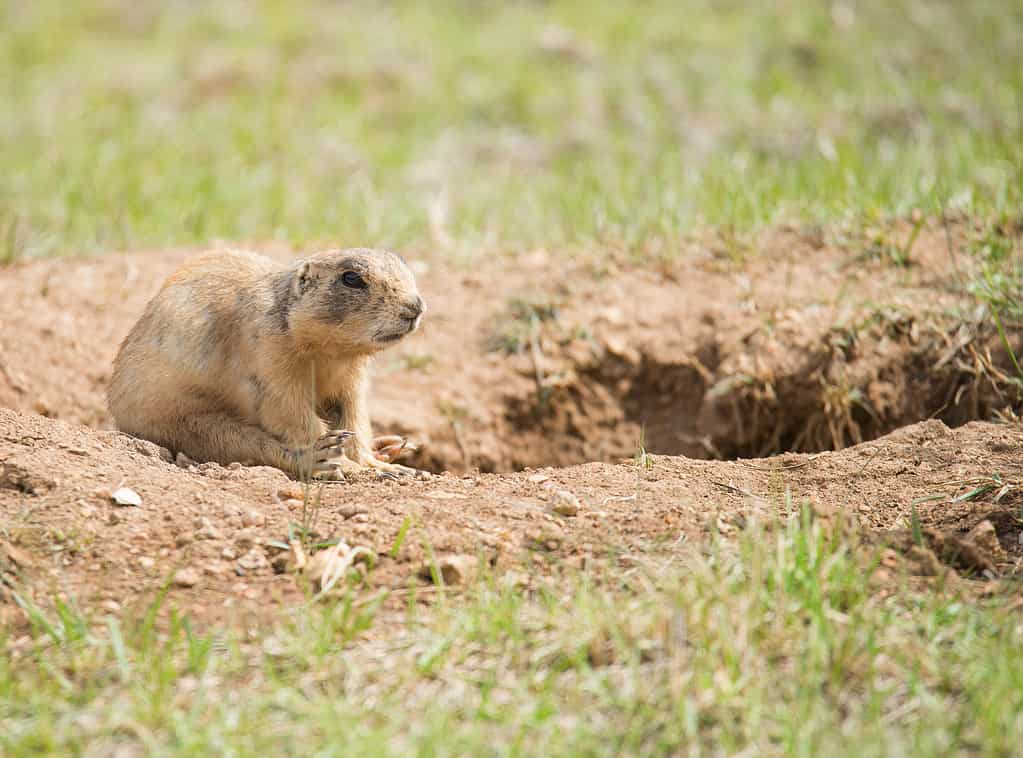
Appearance: Compact tan-colored body, small ears, with a black-tipped short tail
Size: 1 – 3 pounds and 12 – 16 inches long
Habitat: Prairies, open plains, mountains, deserts
Diet: Some insects, many types of grass, roots, thistle, and some plants. They even eat buffalo scat at times.
Lifespan: 3 – 5 years
Prairie dogs are communal animals that share dens in a hierarchy. In Black Elk Peak, these little mammals feast on grasses and insects. When they see the grasses are declining, they switch to different types of plant and insect life to sustain themselves.
#7 Black Hills Bighorn Sheep (Ovis canadensis)

Appearance: Brownish tan body with a white behind, muzzle, and stomach. They are very muscular and have large curled horns that can weigh 30 pounds and, stretched out, can measure over 3 feet long!
Size: 160 – 350 pounds, 5.1 feet long, and up to 42 inches tall at the shoulder.
Habitat: Grassy areas, plains, prairies, mountains
Diet: They choose the most nutritious food available. They prefer grasses, woody plants, herbaceous plants, and shrubs
Lifespan: 12 – 20 years
The bighorn sheep in Black Elk Peak are impressive creatures with a problematic past in Custer State Park, South Dakota. Long ago, bighorn sheep were abundant in the Black Hills and Custer area; likely due to hunting, their numbers vanished. In 1922, eight bighorn sheep were introduced back to the Custer State Park area, and once again, the numbers flourished. Sadly, their demise didn’t take long, and in 1950, the park was again without bighorn sheep. After that, more bighorn sheep were introduced, and their numbers have remained steady with conservation efforts.
#8 Mountain Lions (Felis Concolor)

Appearance: Tawny tan coasts with black around the nose and muzzle. They have long tails at 2.1 – 3.1 feet long and are pure muscle.
Size: 65 – 250 pounds, 7 – 8 feet long, and stands 2 – 3 feet at the shoulder.
Habitat: Steep rocky canyons, mountainous terrain, deserts and coastal forests
Diet: As opportunistic hunters, they will eat any mammal but prefer deer.
Lifespan: 10 – 21 years though 10 is most common for wild mountain lions
These massive kitties are incredibly reclusive and avoid contact with humans. However, they have recently made the news several times for stalking humans. The humans in question likely stumbled upon some little mountain lions, and their mama intervened like all good mamas do. It is vital to keep your food secure if camping in South Dakota and to remain aware at all times just in case you cross paths with one of these beautiful animals. Chances are they will be more aware of your presence than you are of theirs and get out of there long before you come hiking through.
#9 Yellow-Bellied Marmots (Marmota flaviventris)
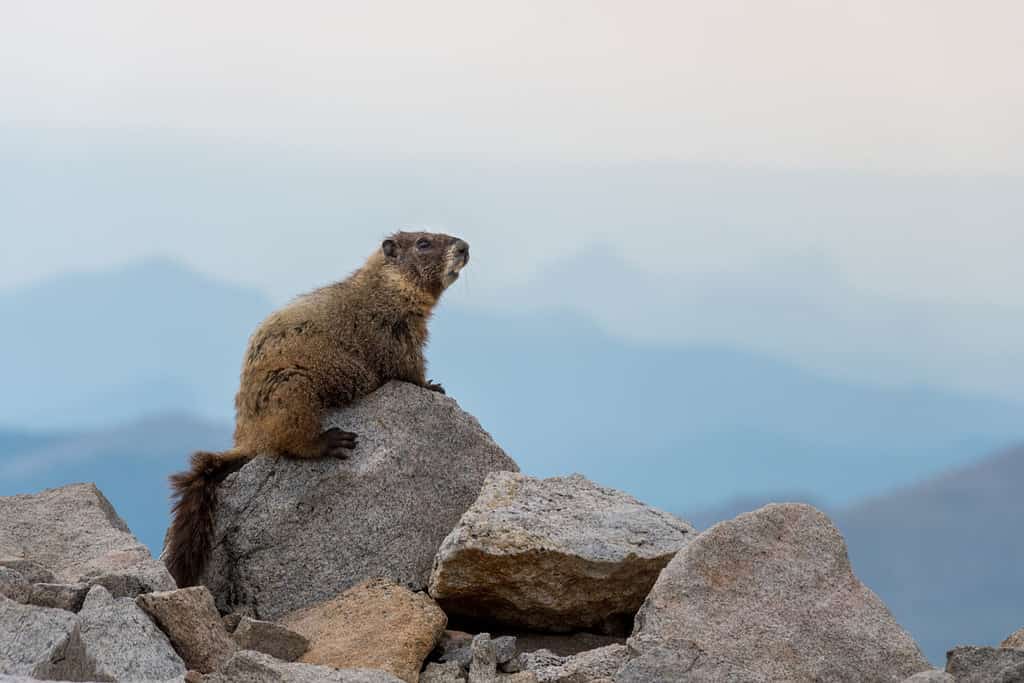
Appearance: Brown fur with a dark brown bushy tail, white around their nose, and yellowish bellies.
Size: Up to 11 pounds, 2 feet long
Habitat: Rocky, mountainous terrain above 6,500.
Diet: Insects, flowers, grass, plants, and bird eggs
Lifespan: Up to 15 years
These rodents live in colonies of 10 – 20 marmots and warn others of predators by whistling from their lookout perch. They are opportunistic foragers who eat small animals, insects, and their favorite foliage and flowers. The marmot eats at dawn and dusk but otherwise remains underground.
#10 Bald Eagles (Haliaeetus leucocephalus)
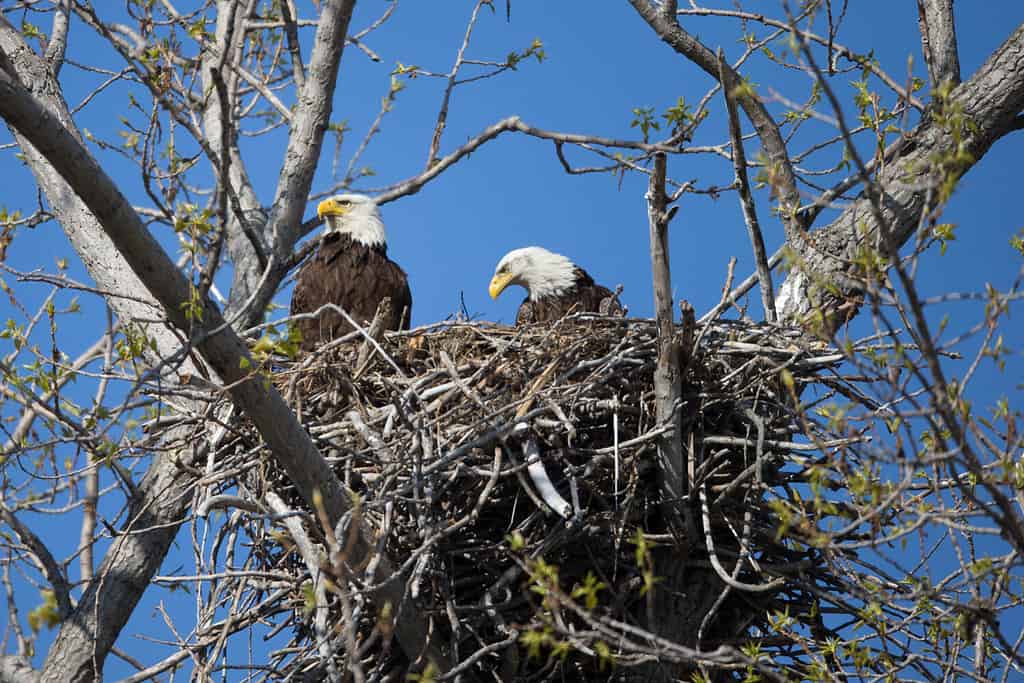
Appearance: Dark brown body with a white head, yellow beak, feet, and golden eyes.
Size: 6.6 – 14 pounds, and a wingspan of 5.9 – 7.5 feet
Habitat: They nest in very tall trees near water sources but can be seen soaring high above the tallest mountains.
Diet: Fish, carrion, small to medium-sized mammals
Lifespan: 20 – 30 years
These massive birds soar high above Black Elk Peak, South Dakota looking for prey. They prefer to nest near bodies of water and likely live across from Black Elk Peak at Sylvan Lake. The lake is also filled with fish, the eagle’s favorite food.
#11 Coyotes (Canis latrans)
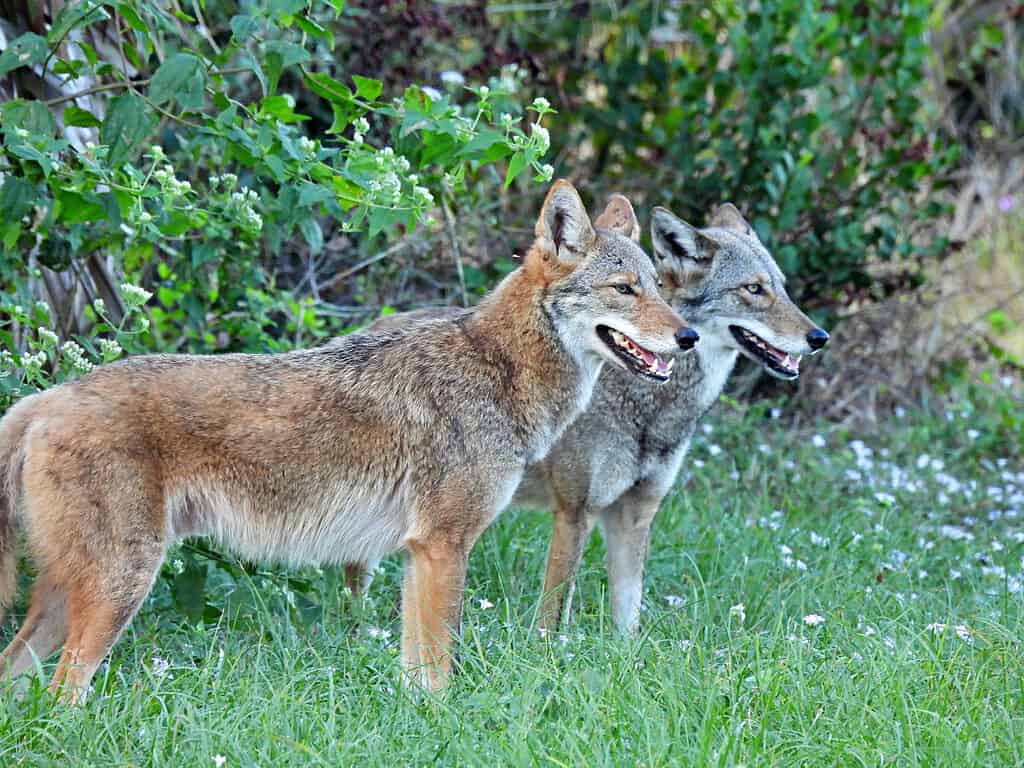
Appearance: Grey, tan, brown, and black coats with tan legs and white or beige undersides and chests. It has yellow eyes, large pointed ears, and a black nose.
Size: 15 – 46 pounds, 30 -35 inches,
Habitat: Forests, plains, mountains, deserts, urban areas, and coastal regions
Diet: As opportunistic hunters, coyotes will eat just about anything, including trash. They prefer small – medium-sized mammals, fish, carrion, eggs, birds, amphibians, and human food.
Lifespan: 10 – 15 years
You will unlikely see the mostly nocturnal coyote, but they are out there. You may hear them throughout the night and even see their tracks in the dirt. They have plenty of prey around in South Dakota’s Black Elk Wilderness and would never approach a human unless they were guarding their young or starving to death. If you bring your dog, make sure to keep it leashed. Coyotes are known for snatching small dogs for food and tempting larger dogs to chase them.
#12 Black Hills Elk (Cervus canadensis)
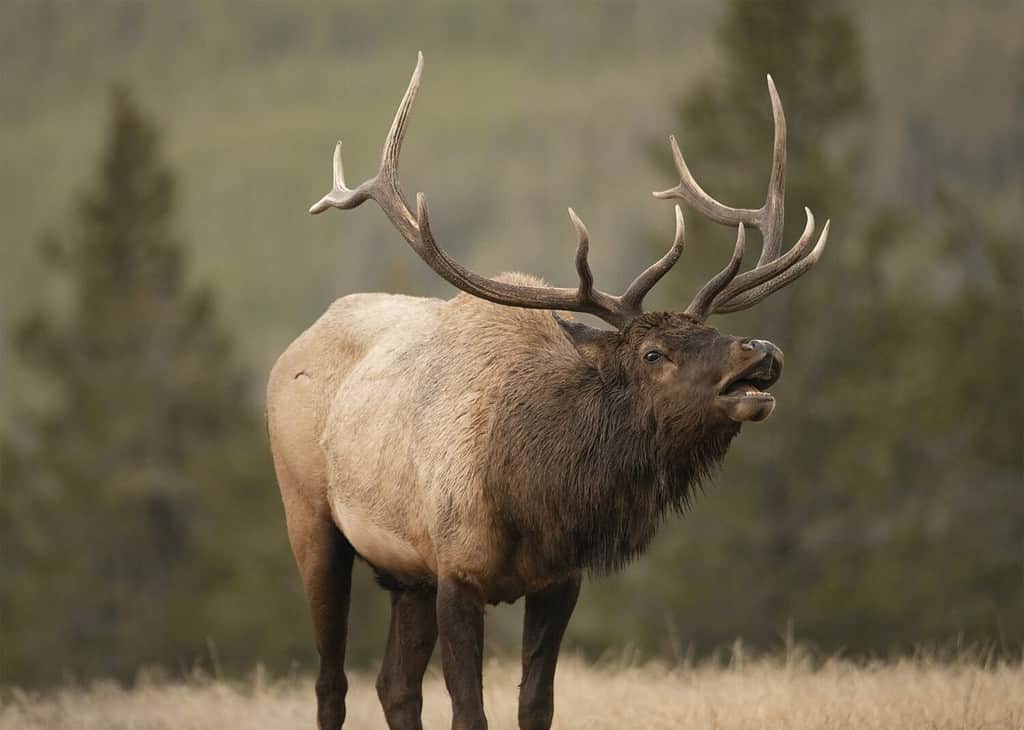
Appearance: Tan body with a darker mane of fur around the neck and head, dark legs, muscular bodies, and large antlers.
Size: 377 -1300 pounds, 2.5 – 5 feet tall at the shoulder and 5.5 – 9 feet long
Habitat: Grassy areas, prairies, forest edges, some sub-desert terrain, mountains, and coniferous forests
Diet: Grasses, shoots, shrubs, some trees,
Lifespan: 10 – 20 years
Elk are abundant in Custer State Park, South Dakota though they do not come out during the hot summer days. Instead, the best time to see these giant majestic creatures is at dawn and dusk during the warmer weather and throughout the year. There is a hunting season for elk though it does have a limit because conservation efforts are underway. The best place to see elk during your hike to Black Elk Peak is on Wildlife Loop Road at the times stated above.
#13 Osprey (Pandion haliaetus)
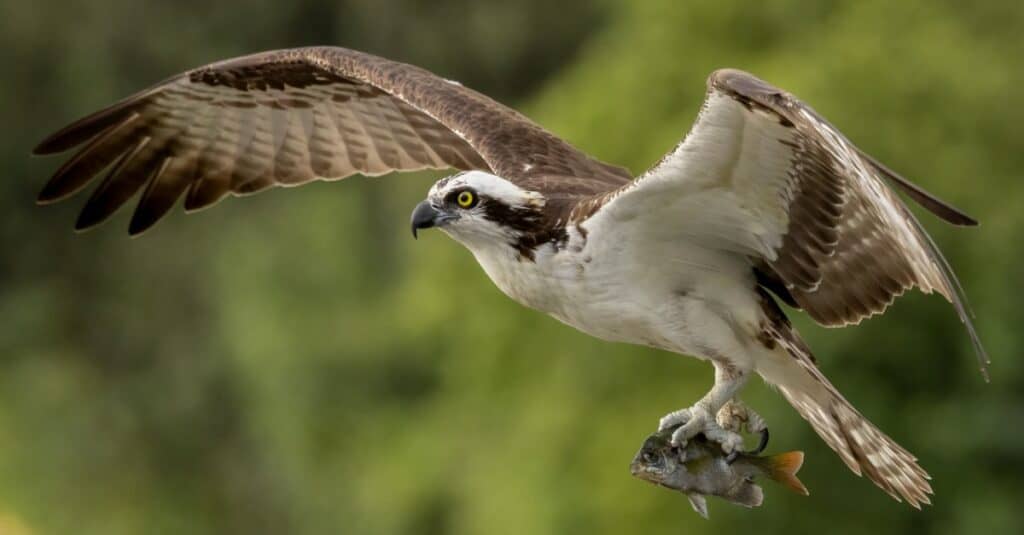
Appearance: White underbody and feet, brown and white striped upper wings, with the underside half white and half brown with white striped feathers. They have yellow eyes and a black beak.
Size: 3 – 4 pounds, 21-23 inches long, and a wingspan of 5 – 6 feet
Habitat: Tall trees near bodies of water
Diet: Fish that are no deeper than 3 feet underwater and no more than 16 inches in length
Lifespan: 8 – 10 years, but can occasionally live up to 25 years
The lovely Osprey is one of many raptors that call Custer State Park home. With Sylvan Lake nearby, these massive birds stay nearby, hunting fish and feeding their young. They generally nest in tall trees near bodies of water so they don’t have to travel far with their prey.
#14 Pronghorn Antelope (Antilocapra americana)
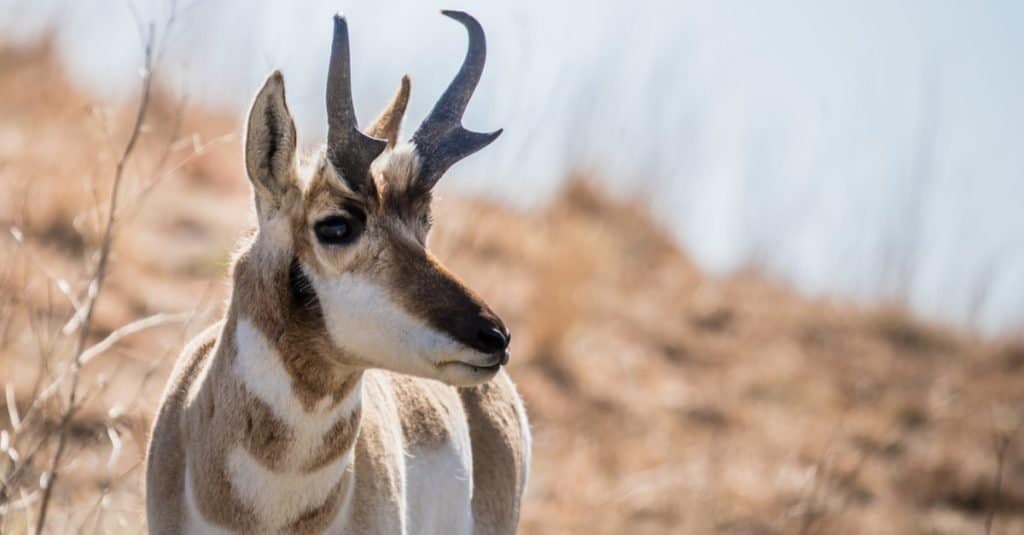
Appearance: Reddish-brown upper with a white underside and distinctive markings on their necks. They have a white rear, and their hair stands up on it when startled. They have horns reaching 15 inches long.
Size: 90 – 150 pounds, 4.5 feet long, and 31 – 41 inches tall at the shoulder
Habitat: Grassy plains or prairies and deserts
Diet: Grasses and cactus plants, which they sometimes use as a water source
Lifespan: 10 years
The Longhorn antelope are abundant in Custer State Park, South Dakota and frequently seen on Wilderness Loop Road. They are swift long-distance runners but not good jumpers, so they tend to stick to wide-open grassy plains where they can outrun predators.
#15 Peregrine Falcons (Falco peregrinus)

Appearance: Dark head feathers, hooked beak, yellow feet, black eyes, grey and white striped feathers on wings and tail with a white neck and chest.
Size: .5 – 3.3 pounds, 14 – 19.2 inches long, and 2.4 – 3.9 foot wingspan
Habitat: Mountains, coastal regions, deserts, plains, forests, and anywhere near a body of water
Diet: Other birds, mainly; starlings, pigeons, blackbirds, jays, shorebirds, waterfowl, and sometimes insects, amphibians, reptiles, and bats.
Lifespan: 15 years
They may be small, but they are mighty and, by far, the most ferocious bird out there. Watching these small falcons while in South Dakota is a real treat because they tend to reach speeds over 200 mph while diving and do various tricks while in flight. Their small angular wings allow them to take turns very abruptly.
#16 Porcupines (Erethizon dorsaum)

Appearance: Big, stout, spiky mammals that vary slightly in color from dark brown and black to chestnut brown with long fur with white tips making up two inches of the hair.
Size: 22 – 30 pounds
Habitat: Dense coniferous and mixed forests, mountains, desert shrub communities, tundra, grasslands, and plains.
Diet: During the winter, they predominantly eat evergreen needles and the inner bark of trees, although they will eat other items if they are available and not buried in snow. In the spring and summer, they eat berries, roots, shoots, leaves, seeds, grasses, and stems.
Lifespan: 18 years in the wild
Like some other animals on this page, the porcupine is elusive and rarely seen. They are very slow-moving, maxing out at two mph, and tend to be rightfully wary of humans. Sometimes in South Dakota, you might see one making their way through the forest or up in a tree. Porcupines even make nests in trees sometimes. They are destructive and do not stop at having a small piece of bark for a snack. Porcupines will eat as much of the tree as they can reach, often killing the tree.
#17 Eastern Wild Turkeys (Meleagris gallopavo)
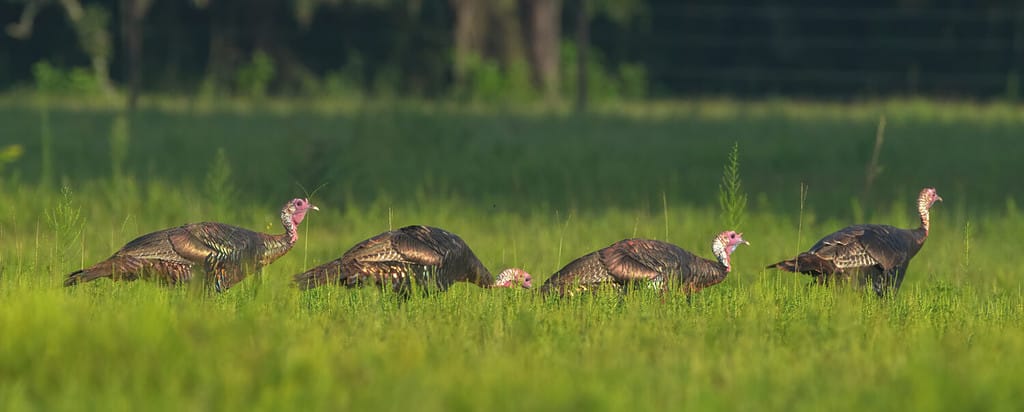
Appearance: Large brown birds with iridescent feathers, small heads with red and blue coloring making their large eyes stand out. The males have a very prominent red snood. The males have long tail feathers that they spread wide during their mating display, similar to a peacock’s mating dance.
Size: 5.5 – 24 pounds, 3.5 feet long, 3.3 foot tall, and has a wingspan of 4 – 4.75 feet
Habitat: Riparian forests next to grassy fields or clearings and near bodies of freshwater. They also tend to like farmland with big open pastures.
Diet: Berries, fruit, seeds, nuts, roots, amphibians, reptiles, insects, acorns, snails, and vegetable matter.
Lifespan: 3 – 5 years
These large birds are not quiet and will certainly let you know where they are once they start gobbling. Turkeys tend to stick along where the forest meets open grassy areas and walk in a group. Occasionally you will see a male strutting around by himself. Like chickens, it’s one male to a group of females. Wild turkeys are often depicted as flightless; they can fly short distances but prefer walking to forage. Sometimes wild turkeys have been known to be aggressive towards humans and pets. While you are enjoying your hike in South Dakota, remember to respect the wildlife.



Post a Comment
0Comments